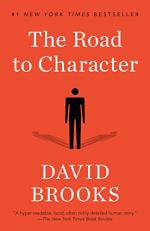
|
| Name: _________________________ | Period: ___________________ |
This test consists of 15 multiple choice questions and 5 short answer questions.
Multiple Choice Questions
1. What two types of virtues does Brooks compare and contrast in the Introduction?
(a) Career virtues and family virtues.
(b) True virtues and false virtues.
(c) Resume virtues and eulogy virtues.
(d) Country virtues and city virtues.
2. What cabinet-level position did Perkins hold during the Roosevelt years?
(a) Secretary of Commerce.
(b) Secretary of Trade.
(c) Secretary of Labor.
(d) Secretary of State.
3. What happens to Perkins in 1939 that tests her resilience?
(a) She is the subject of impeachment proceedings.
(b) Her mother dies.
(c) Her husband dies.
(d) She is fired.
4. Where was Frances Perkins born?
(a) Chicago.
(b) Boston.
(c) Los Angeles.
(d) New York City.
5. What did an aide of Dwight Eisenhower's compare Eisenhower's temper to?
(a) A five-alarm fire.
(b) The sun.
(c) A Bessemer furnace.
(d) Molten lava.
6. What did Ida Eisenhower do after losing a son named Paul?
(a) Had a nervous breakdown.
(b) Became even more loving and caring to her other children.
(c) Joined a religious group that would later evolve into the Jehovah's Witnesses.
(d) Left the family.
7. What well-known war correspondent's work did the radio program Brooks describes in Chapter 1 feature?
(a) Ernie Pyle.
(b) David Mitchell.
(c) David Halberstam.
(d) Carl Bernstein.
8. How does Brooks describe Dwight Eisenhower's father?
(a) Solitary and difficult.
(b) Gentle and honest.
(c) Flighty and undependable.
(d) Gregarious and outspoken.
9. When did Day officially join the Catholic Church?
(a) 1935.
(b) 1927.
(c) 1956.
(d) 1918.
10. In Chapter 4, what kind of job did Dorothy Day's father have?
(a) He was a coal miner.
(b) He was a journalist.
(c) He was a construction worker.
(d) He was a doctor.
11. What was the name of the radical newspaper where Day got her first job?
(a) The Morning Herald.
(b) The Red Banner.
(c) The Worker's Rebellion.
(d) The Call.
12. Harry Emerson Fosdick once wrote that the beginning of worth-while living involves a confrontation with whom?
(a) Our Gods.
(b) Our parents.
(c) Our friends.
(d) Ourselves.
13. In Chapter 1, Brooks writes that the struggle against the weakness in yourself is never which of the following?
(a) A paid struggle.
(b) An easy struggle.
(c) A solitary struggle.
(d) A worthwhile struggle.
14. Who did Day have a child with?
(a) David Farber.
(b) Forster Batterham.
(c) Sinclair Lewis.
(d) Daniel Day Smith.
15. What is the title of William James' treatise that Brooks reference in Chapter 3?
(a) Sin.
(b) Self-control.
(c) Habit.
(d) Love and Hate.
Short Answer Questions
1. What kind of apparel did Dwight Eisenhower often wear when he was in a foul temper?
2. What is the title of Kirstin Downey's biography about Perkins?
3. What did Ida Eisenhower study in college?
4. What was the title of Day's novel that was based on her early disordered life?
5. What does Brooks say his book is about in his introduction?
|
This section contains 455 words (approx. 2 pages at 300 words per page) |

|




